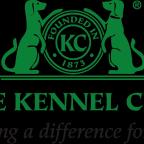
How to Recognise The Signs of Spring Allergies in Your Dog
Just like with us humans, our dogs can suffer from seasonal allergies. Although allergy symptoms display differently in dogs, they often have the same triggers.
Most springtime allergies are caused by environmental conditions, like the increased level of pollen in the air when flowers bloom, and grass, weeds and trees flourish.
Sean McCormack, Head Vet at tails.com has shared the signs of seasonal allergies in dogs, as well as the steps you can take to protect your dog from any discomfort during spring.
Scratching
The amount of itching your pet may experience can range from mild to excessive, and is most common around the armpit, chest and paw areas. When left untreated, the itching can lead to your dog scratching skin until raw, increasing the risk of infection.
If you notice that your dog has been scratching or licking its skin more than normal, do not hesitate to contact your veterinarian.
Excessive licking
A common reaction to allergies is excessive licking of the paws. This occurs when a dog's body naturally pushes histamines to the paws. Histamines are chemicals that the body releases into the bloodstream when the immune system is defending against an allergen.
Eye discharge
Just like humans, dogs' eyes can become itchy and irritated from seasonal allergies. It's important to seek advice from your vet if your dog has discharge from one or both eyes, or if they are seen rubbing them, as it can result in inflammation and secondary infection.
Hair loss
If you notice that your dog is losing more hair than usual, this may also be a sign of seasonal allergies affecting them through the spring period. Allergies are a common trigger for hair loss in dogs, as they often lead to skin irritation. Hair loss can appear in a single spot, in patches or all over the body.
Sneezing
Although less common, some dogs can experience respiratory issues when suffering from allergies, these can include coughing, wheezing, sneezing and difficulty breathing.
Dogs can experience an allergic response to dust, pollen, mould and other allergens in the air that cause irritation to the nasal passages.
Red, irritated skin
Red and irritated skin can be a red flag for an allergic reaction, caused by either your dog's diet, their surrounding environment or by parasites. It can be painful, itchy and uncomfortable, which will often prompt dogs to scratch, lick and chew themselves.
If your dog has inflamed, red skin contact your vet. They will identify and treat the skin rash.
Head shaking
Dogs instinctively shake their heads to relieve discomfort, itchiness or irritation in or around the ears. If your dog shakes their head once or twice, then it's usually nothing to be concerned about, but if they are excessively shaking and vigorously, it's worth a trip to the vet.
Red, swollen eyes
In most cases, if your dog's eyes are red or swollen, chances are they have been exposed to an irritating allergen. To treat any sort of eye swelling or irritation in dogs, you need to take your pet to the vet, so that they can recommend the correct treatment method.
What causes spring allergies?
"Seasonal allergies, like other types, develop when your dog's immune system overreacts to something living in the environment, which could be in the home, garden and other places you visit with your canine companion.
Common triggers for allergic reactions that your dog may face include dust, pollen, mould spores, plants or animal fibres. These allergens are inhaled or absorbed into the skin when your dog comes into contact with them."
How can seasonal allergies be prevented?
There are a few different things you can do to help control the discomfort your dog may be experiencing due to seasonal allergies and reduce the risk of a more serious problem.
Change your daily walking routine - Avoid walking your dog early in the morning or late in the afternoon, as during this time pollen levels are at the highest. If possible, pick a different time and steer clear of fields, long grass and areas with plants.
Keep your dog's space clean - A weekly hot wash and hoover of your dog's bed, blankets, soft toys and favourite places to relax will help to clear allergens. For extra safety, consider covering your chairs and bed with blankets so they can be easily removed for washing.
Clean the air and surfaces - Introducing a dehumidifier into your home will help to remove moisture from the air, making it harder for mould to grow. Vacuum and polish the floors and surfaces to remove the build-up of dust and pollen.
Remove excess allergens - Frequently bathe your dog with shampoo, or use dog-friendly hypoallergenic wipes to clean their paw pads and fur, and wipe gently around the face and eyes to remove any allergens picked up.
Add a supplement to their diet - Try adding a skin supplement or oil into your dog feeding routine. like omega-3 or omega-6. Adding these will help to strengthen their skin's barrier and reduce the symptoms of pollen allergies- including itchiness-and will help to improve overall skin health.
tails.com can create a recipe tailored to your dog's specific needs, made with ingredients to help keep their skin and coat glowing while avoiding ingredients that might bother them.







